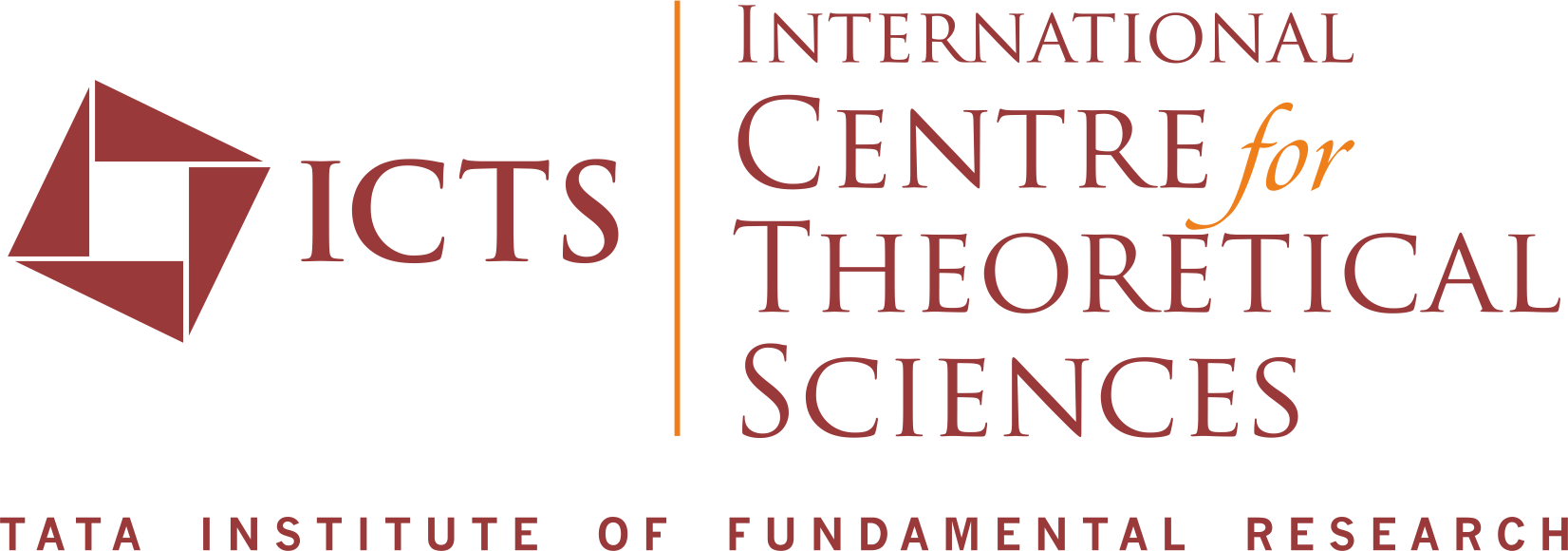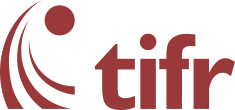Preparatory Courses (December 3-4)
1. C. S. Aravinda: Crash course on Differential geometry and Lie groups. Lecture Notes 1 Lecture Notes 2
2. Vikram Aithal: Crash course on Covering space theory and fundamental groups. Lecture Notes Slides
3. Kashyap Rajeevsarathy: Crash course on Hyperbolic plane geometry. Lecture Notes
Mini-Courses
December 3 - 8:
Pralay Chatterjee
Title: Lattices in Lie Groups.
Abstract:
-----------------------------------------
Moira Chas
Title: The Goldman bracket on Fuchsian groups, String topology and three manifolds.
Abstract: In the eighties, Bill Goldman discovered a Lie algebra structure on the free abelian group with basis the free homotopy classes of closed oriented curves on an oriented surface S. In the nineties, jointly with Dennis Sullivan, we generalized this Lie algebra structure to families of loops (defining the equivariant homology of the free loop space of a manifold). This Lie algebra, together with other operations in spaces of loops is known now as String Topology.
Recently, jointly with Siddhartha Gadgil , we extended the definition of the Goldman bracket to two dimensional orientable orbifolds. This extension of the bracket is defined in the free abelian group with basis the conjugacy classes of a discrete group of orientation preserving isometries of the hyperbolic plane. String Topology operations on orientable Seifert three manifolds can be described in terms of this extended bracket.
The mini course will start with the discussion of the Goldman Lie bracket in surfaces, and how it "captures" the geometric intersection number between curves. Then it will continue with the study of the generalization of the Goldman Lie bracket to orbifolds. In order to do so, we will discuss intersection numbers in orbifolds and its relation with the bracket. Time permitting, the definition of Seifert manifolds will be reviewed, and then, the String Topology operations the equivariant homology of the free loop space of Seifert manifolds will be explained, as well as a a more general discussion of the String Topology operations, a review of the classification of three manifolds, and several applications of of String Topology to three manifolds (These are different works of Abbaspour, Basu, Gadgil, Sullivan-Sullivan and myself).
References:
Goldman, W. M., Invariant functions on Lie groups and Hamiltonian flows of surface group representations, Invent. Math. 85, No.2, (1986), 263-302.
(ii) Chas, M., Gadgil, Siddhartha, The Goldman bracket determines intersection numbers for surfaces and orbifolds preprint arXiv:1209.0634
(iii) Notes about equivariant homology by Somnath Basu: http://www.math.binghamton.edu/somnath/Notes/EH.pdf
Chas,M and Sullivan, String Topology, Arxiv preprint math/9911159
(v) Hatcher, A., Notes on Basic 3-manifold Topology. Cambridge University Press, Cambridge, 2002.
For an exhaustive list of references see the Tentative List of Topics and References at http://www.math.sunysb.edu/~moira/mat667-spr12/index.php?page=syllabus
----------------------------------------
S. G. Dani
Title: An Introduction to Flows on Homogeneous Spaces
Abstract: By a homogeneous space we mean a topological space on which there is a transitive action of a Lie group G, e.g. SL(n,\R), n≥2, and we further assume that there is a finite measure on the space invariant under the action. Studying the dynamics of
the flows on the space arising from the action of subgroups of G has led to a rich theory, applicable in geometry and diophantine approximation.
We shall start with some of the simplest examples, including the case of G=SL(2,\R), and discuss the dynamical behaviour of the flows, introducing various notions in this respect, both from ergodic theory and topological dynamics points of view. More general results will be described, with proofs wherever they can be conveniently included in the course. Applications of the results to various problems in diophantine approximation will be discussed.
------------------------------------
Gareth Jones
Title: Beauville surfaces and groups
--------------------------------------
Mahan Mj
Title: Recent Developments in Kleinian Groups
Abstract: I shall survey some of the recent developments in the field -- both for Infinite covolume and finite covolume groups.
--------------------------------------
Jose Seade
Title: Complex Kleinian Groups.
Outline of the course:
Lecture 1: A crash look at classical Kleinian groups: Their definition and action on hyperbolic space and on the Riemann sphere. Discontinuity and equicontinuity regions, the limit set and some basic properties. Finally examples: Fuchsian and Schottky groups.
Lecture 2: Complex Kleinian groups: The regions of discontinuity and equicontinuity. The Kulkarni limit set and examples: Complex hyperbolic groups (just mentioning them: This is an obvious link with your lectures, and so is my first lecture.), complex affine groups and Schottky groups.
Lecture 3 & 4: Foundations of Complex Kleinian subgroups of PSL(3,C).
-------------------------------------
Anthony Weaver
Title: Discrete Groups and Riemann Surfaces.
Abstract: I'll start from scratch with definitions and basic examples. I'll review the basics of meromorphic functions, holomorphic maps, branched coverings, local normal form, the Riemann-Hurwitz relation, and monodromy groups. I will explain the resolution of monomial singularities and go into some detail about cyclic coverings of the line, including hyperelliptic surfaces. In the process I will define some special curves with large automorphism groups, including those of Fermat, Klein, Wiman, Lefschetz, Accola-Maclachlan, and Kulkarni. I will then introduce another approach, via uniformization and Fuchsian groups, and discuss the Riemann surface version of the problem of group extensions. Finally, I will discuss some related topics of high currrent interest, including Belyi surfaces, platonic and quasiplatonic surfaces; the combinatorial objects that live on these surfaces, such as maps, hypermaps, and dessins d'enfants; and the faithful action of the absolute Galois group on these objects.
-----------------------------------------
December 10 - 12:
Virginie Charette and Todd Drumm
Title: Lorentzian Geometry
Outline of the course:
Lecture 1 -- Todd Drumm: The Basic (A) Affine space and its tangent space (B) The inner product (C) Light, Space and Time (D) Perpendicular Planes (E) Relationship to Hyperbolic Geometry (F) Transformations.
Lecture 2 -- Virginie Charette: Group Actions (A) Transformations (B) Margulis Invariant, Definition, Interpretation & conjugacy (C) Examples of non-Margulis Space-times (D) Examples of Margulis Space-Times. Slabs, and Crooked Planes.
Lecture 3 -- Todd Drumm: Deformations (A) Affine deformations (B) Deformations of Surfaces (C) Lie Algebra sl(2,R) (D) Relationship between sign of Margulis invariant and Length of closed geodesics.
Lecture 4 -- Virginie Charette: Einstein Universe (A) Standard conformal compactifications (B) Infinity, Improper point, Cone at infinity and Sphere at infinity (C) Closure of curves (D) Transformations (E) Covers of the Einstein Universe.
-----------------------------------
François Guéritaud
Title: The Geometry and Topology of Margulis Spacetimes.
Abstract: Margulis gave the first examples of complete flat Lorentzian 3-manifolds (i.e. quotients of R^{2+1} by affine transformations) with free fundamental group -- an unexpected answer to a question of Milnor. Goldman, Labourie and Margulis later proved that such spacetimes correspond to infinitesimal deformations of hyperbolic surfaces that tend to contract the lengths of all geodesic loops.
In recent work with J. Danciger and F. Kassel, we show the deformation can actually be taken to just shrink all distances. This has several upshots:
1) Margulis spacetimes (MS's) are foliated by timelike geodesics.
2) MS's are topologically handlebodies.
3) MS's are renormalized limits of collapsing families of negatively curved (also called "anti-de Sitter") spacetimes.
4) The arc complex of the underlying surface gives an essentially canonical parametrization of the deformation space of MS's, via a "crooked plane" construction (Drumm, Goldman, Charette).
I will assume familiarity with plane hyperbolic geometry but otherwise define all necessary notions.
Related References:
(i) W. Goldman, F. Labourie, G. Margulis, "Proper Affine Actions and Geodesic Flows of hyperbolic surfaces", Annals of Maths 170 n° 3, 1051--1083 (2009)
(ii) T. Drumm, W. Goldman, "The geometry of crooked planes", Topology 38, No. 2 (1999), pp. 323 - 352.
--------------------------------------
John R. Parker
Title: An Invitation to Complex Hyperbolic Geometry.
Outline of the course:
Lecture 1. Geometry of complex hyperbolic space [Slides]
Lecture 2. Complex hyperbolic quasi-Fuchsian groups [Slides]
Lecture 3. Traces in complex hyperbolic geometry [Slides]
References: Lecture 1: Lecture Notes
Lecture 2: John R Parker & I. D. Platis, Complex hyperbolic quasi-Fuchsian groups In Geometry of Riemann Surfaces London Mathematical Society Lecture Notes 368 (2010) 309-355.
Lecture 3: John R. Parker, Traces in complex hyperbolic geometry In Geometry, Topology and Dynamics of Character Varieties, Lecture Notes Series 23, Institute for Mathematical Sciences, National University of Singapore, 191-245. World Scientific Publishing Co, 2012.
-------------------------------------------
Peter Shalen
Title: Quantitative Geometry of Hyperbolic 3-Manifolds.[Slides1] [Slides2] [Slides3]
Abstract: Here
Study-Guide: Here

